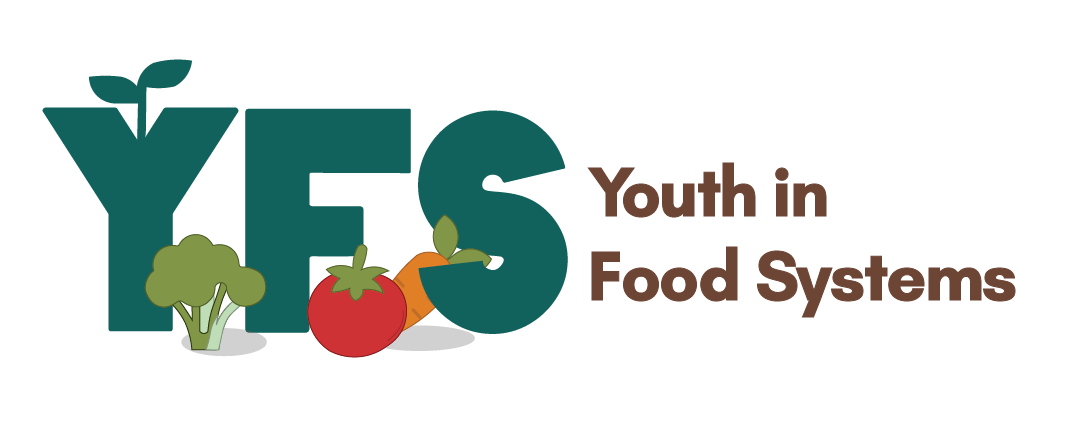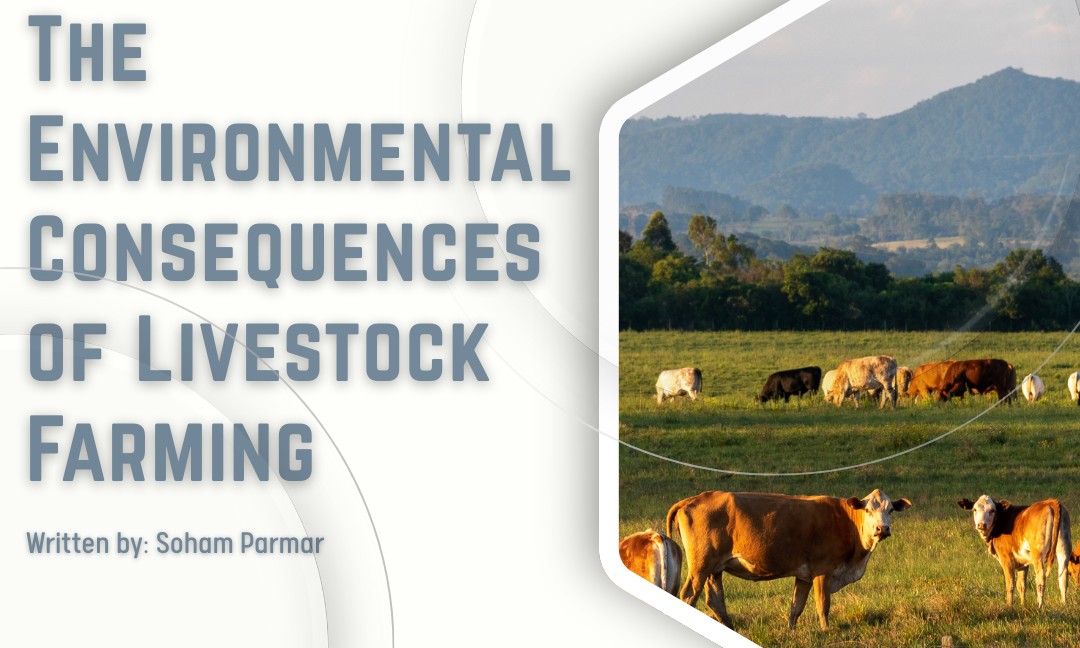Written by: Soham Parmar
Edited by: Jana Daniels
Designed by: Andria Sahar
Published by: Andrew Jackson
 What we eat has a huge impact on the state of the planet and the survival of all species in the world. That juicy cheeseburger might seem completely harmless, but when you consider the resources and processes involved it’s a different story. These include clearing forests for pasture, methane emissions from cattle, and the entire process of getting that burger from farm to table. All of this contributes significantly to climate change, water pollution, biodiversity loss, and more.
What we eat has a huge impact on the state of the planet and the survival of all species in the world. That juicy cheeseburger might seem completely harmless, but when you consider the resources and processes involved it’s a different story. These include clearing forests for pasture, methane emissions from cattle, and the entire process of getting that burger from farm to table. All of this contributes significantly to climate change, water pollution, biodiversity loss, and more.
What is Livestock Farming?
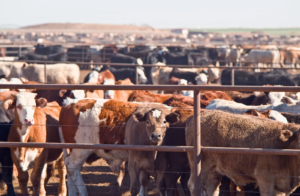 Livestock farming is the practice of raising animals for food, clothing, transportation, labor, and recreation. Animals such as cows, pigs, sheep, chickens, and goats are considered livestock. In addition to producing milk, meat, and eggs, livestock farming also provides materials like wool and leather and can involve the use of animals for work or leisure.
Livestock farming is the practice of raising animals for food, clothing, transportation, labor, and recreation. Animals such as cows, pigs, sheep, chickens, and goats are considered livestock. In addition to producing milk, meat, and eggs, livestock farming also provides materials like wool and leather and can involve the use of animals for work or leisure.
Environmental Consequences
Worldwide, more than 70 billion land animals are killed every year for food! The demand for meat and dairy products is expected to increase by 70% in the year 2050. Rearing animals for food on this industrial scale is having a devastating impact on the natural environment. Livestock farming can lead to climate change, deforestation, water pollution, and global food and water shortages. Livestock are the major contributors of methane gas, and deforestation which are the leading causes of climate change and global warming. Adverse effects of livestock farming on the environment.
- Climate Change – One of the biggest ways livestock farming contributes to climate change is through the emission of greenhouse gasses, which trap heat in the Earth’s atmosphere and cause global temperatures to rise. Studies show that livestock production accounts for around 9% of all Carbon Dioxide emissions, 35-40% of methane emissions and 65% of Nitrous Oxide emissions. The carbon footprint is heavy in the case of red meat production.
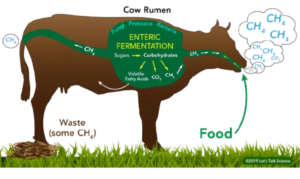 Methane gas emissions: Cows, sheep, goats and other livestock have microbes in their system that decompose the food, and methane is a byproduct of this fermentation process.This methane is released into the atmosphere through their burps and farts and it’s also contained in their urine and manure. A single cow produces between 154 to 264 pounds of methane gas per year. Nitrous oxide is released mainly from nitrogen-based fertilizers used oncrops grown to feed livestock.
Methane gas emissions: Cows, sheep, goats and other livestock have microbes in their system that decompose the food, and methane is a byproduct of this fermentation process.This methane is released into the atmosphere through their burps and farts and it’s also contained in their urine and manure. A single cow produces between 154 to 264 pounds of methane gas per year. Nitrous oxide is released mainly from nitrogen-based fertilizers used oncrops grown to feed livestock.
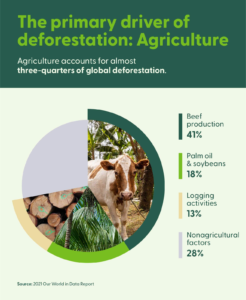 Deforestation – The increasing demand for the animal products and the lack of land is responsible for clearing forests and turning them into pasture. Nearly 45% of the Earth’s land is used for raising livestock. In many parts of the world, the main cause for deforestation is livestock rearing and the growing of fodder. It is estimated that 1-2 acres of rainforests are cleared every day for animal agriculture. Rainforests are home to about 50 percent of all plant and animal species on Earth, and if these habitats vanish, many of them could go extinct permanently.
Deforestation – The increasing demand for the animal products and the lack of land is responsible for clearing forests and turning them into pasture. Nearly 45% of the Earth’s land is used for raising livestock. In many parts of the world, the main cause for deforestation is livestock rearing and the growing of fodder. It is estimated that 1-2 acres of rainforests are cleared every day for animal agriculture. Rainforests are home to about 50 percent of all plant and animal species on Earth, and if these habitats vanish, many of them could go extinct permanently.
 Water Pollution – Growing crops to feed livestock is a major source of water pollution. Factory farms confine thousands of animals in a relatively small area where lots of waste is collected. The waste is packed with nutrients—especially nitrates—which have become the most common pollutants in the world’s groundwater aquifers. High nitrate levels can lead to serious medical conditions such as birth defects and thyroid problems. Moreover, when waste runoff containing nitrogen and phosphorus reaches rivers, lakes, or oceans, they can trigger algal blooms. As the algae die and decompose, oxygen levels drop, killing fish and other aquatic life. This not only harms the environment but also affects local communities that rely on fishing and clean water for their livelihoods.
Water Pollution – Growing crops to feed livestock is a major source of water pollution. Factory farms confine thousands of animals in a relatively small area where lots of waste is collected. The waste is packed with nutrients—especially nitrates—which have become the most common pollutants in the world’s groundwater aquifers. High nitrate levels can lead to serious medical conditions such as birth defects and thyroid problems. Moreover, when waste runoff containing nitrogen and phosphorus reaches rivers, lakes, or oceans, they can trigger algal blooms. As the algae die and decompose, oxygen levels drop, killing fish and other aquatic life. This not only harms the environment but also affects local communities that rely on fishing and clean water for their livelihoods.
 Global Food Shortages – Raising animals for food is an incredibly inefficient way of producing food. This is because most of the calories animals consume are used just to keep them alive, not to create food for humans. Beef cattle are the most inefficient food converters. They require around 25 kilograms of feed to produce just 1 kilogram of meat, meaning more than 95% of what they are fed is wasted. Currently livestock consume over a third (36%) of all crop calories globally, yet account for less than a fifth (18%) of the calories we eat. In addition, if we used this land and food to feed people directly we could feed at least four times as many people.
Global Food Shortages – Raising animals for food is an incredibly inefficient way of producing food. This is because most of the calories animals consume are used just to keep them alive, not to create food for humans. Beef cattle are the most inefficient food converters. They require around 25 kilograms of feed to produce just 1 kilogram of meat, meaning more than 95% of what they are fed is wasted. Currently livestock consume over a third (36%) of all crop calories globally, yet account for less than a fifth (18%) of the calories we eat. In addition, if we used this land and food to feed people directly we could feed at least four times as many people.
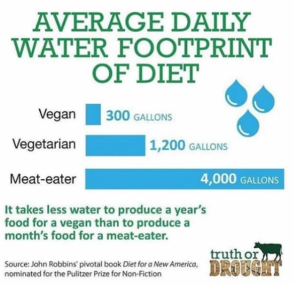 Global Water Shortages– Livestock farming is one of the biggest drains on the world’s limited freshwater supply. Agriculture requires by far the highest amount of water, accounting for 85% of today’s global freshwater consumption. Producing just one 150g beef burger requires about 2,350 litresof water—15 times more than a plant-based burger. Most of this water isn’t for the animals themselves but to grow the massive amounts of feed they consume. The more freshwater we use for animal farming, the less will be available for people to drink, or to use for growing crops.
Global Water Shortages– Livestock farming is one of the biggest drains on the world’s limited freshwater supply. Agriculture requires by far the highest amount of water, accounting for 85% of today’s global freshwater consumption. Producing just one 150g beef burger requires about 2,350 litresof water—15 times more than a plant-based burger. Most of this water isn’t for the animals themselves but to grow the massive amounts of feed they consume. The more freshwater we use for animal farming, the less will be available for people to drink, or to use for growing crops.
How Farmers Are Taking Action
 Farmers are getting engaged in many different conservation practices that help to preserve the environment. These include no-till, installing streamside fences, managing water run- off, and rotating crops with pasture to improve soil health and prevent erosion. The type of feed given to livestock can have a significant impact on the amount of methane they produce during digestion. High-quality forages, grains, and feed additives such as oils or seaweed can reduce methane emissions. By choosing animals with better feed efficiency and lower methane output, farmers can reduce the overall environmental impact of their herds. Sustainable water management practices aim to reduce water consumption, protect water quality, and improve the efficiency of water use on farms. Key water conservation practices include: Efficient irrigation systems, Rainwater Harvesting, Riparian buffer zones, and water recycling.
Farmers are getting engaged in many different conservation practices that help to preserve the environment. These include no-till, installing streamside fences, managing water run- off, and rotating crops with pasture to improve soil health and prevent erosion. The type of feed given to livestock can have a significant impact on the amount of methane they produce during digestion. High-quality forages, grains, and feed additives such as oils or seaweed can reduce methane emissions. By choosing animals with better feed efficiency and lower methane output, farmers can reduce the overall environmental impact of their herds. Sustainable water management practices aim to reduce water consumption, protect water quality, and improve the efficiency of water use on farms. Key water conservation practices include: Efficient irrigation systems, Rainwater Harvesting, Riparian buffer zones, and water recycling.
How We Can Help
We can all play a part in helping the environment by making smarter choices. Eating less meat, even just a few times a week, can lower the demand for large-scale livestock farming. Researchers at the University of Oxford found out that going vegan can reduce an individual’s climate footprint from food by up to 70%. The figure is 63% for a vegetarian diet. Finally, learning more about where our food comes from and spreading awareness can make a big difference in creating a more sustainable future.
Final Thoughts
The environmental cost of livestock farming is too great to ignore—from accelerating climate change to draining our planet’s vital resources. The truth is, our food choices shape the future of the Earth more than we realize. By rethinking our food choices and supporting sustainable practices, we each have the power to protect the Earth for future generations.
Bibliography:
- GeeksforGeeks. (2025, July 23). What is Livestock Farming? Its Types, Advantages and Importance. GeeksforGeeks. What is Livestock Farming? It’s Types, Advantages and Importance – GeeksforGeeks
- ANIMAL AID. (n.d.). The environmental impact of animal farming. https://www.animalaid.org.uk/wp-content/uploads/2022/06/EnvironmentalFactsheet_FINALWEB.pdf JSathya, M. J. G. G. I. R. B. (2022, January 12). Environmental implications of livestock farming. Environmental Implications of Livestock Farming
- Millstein, S. (2024, July 25). How livestock farming affects climate change, explained. Sentient. How Livestock Farming Affects Climate Change, Explained
- Agriculture and Aquaculture: Food for Thought | US EPA. (2025, January 15). US EPA. Agriculture and Aquaculture: Food for Thought | US EPA.
- How does animal agriculture pollute water? | Farm Forward. (n.d.). Farm Forward. How does animal agriculture pollute water? | Farm Forward
- Handley, E. (2023, July 11). The devastating water footprint of animal agriculture. Open Access Government. https://www.openaccessgovernment.org/devastating-water-footprint-animal-agriculture/163485/
- Sustainable Livestock Farming Practices for Resilience. (2023). Alliance Bioversity International – CIAT. https://alliancebioversityciat.org/stories/sustainable-livestock-farming-practices-resilience
